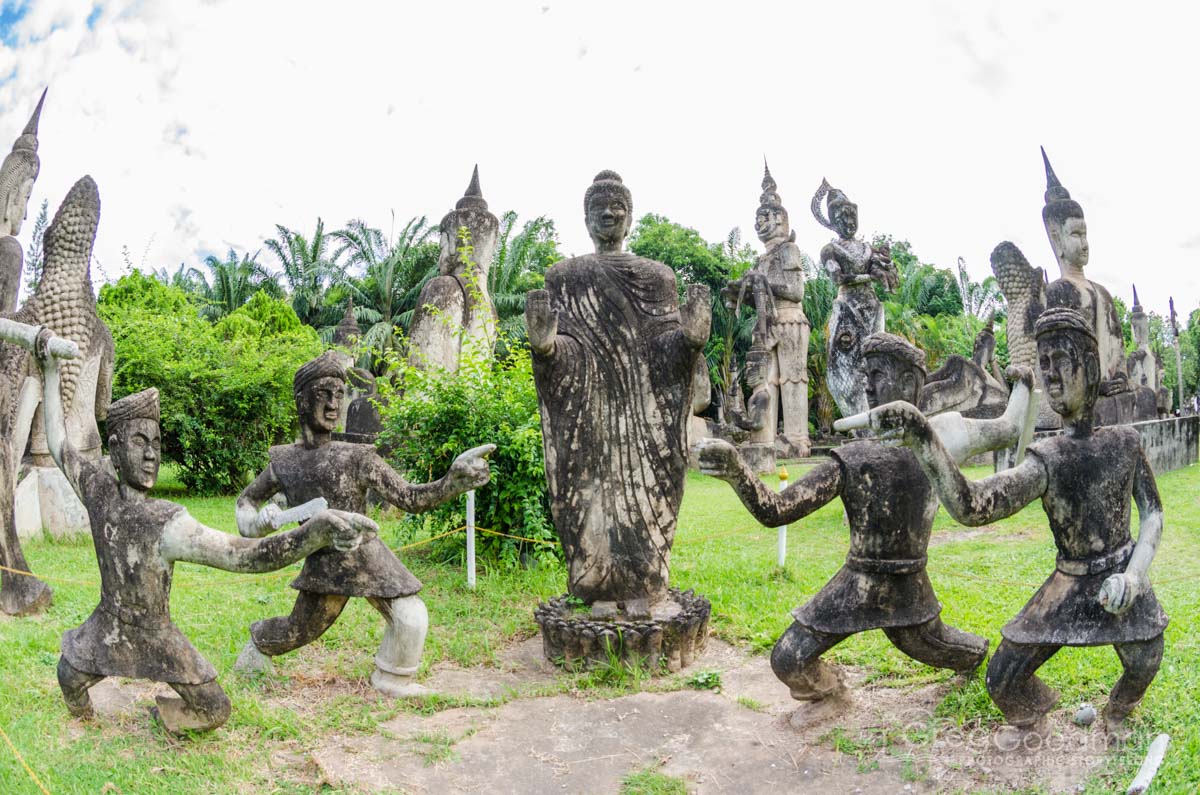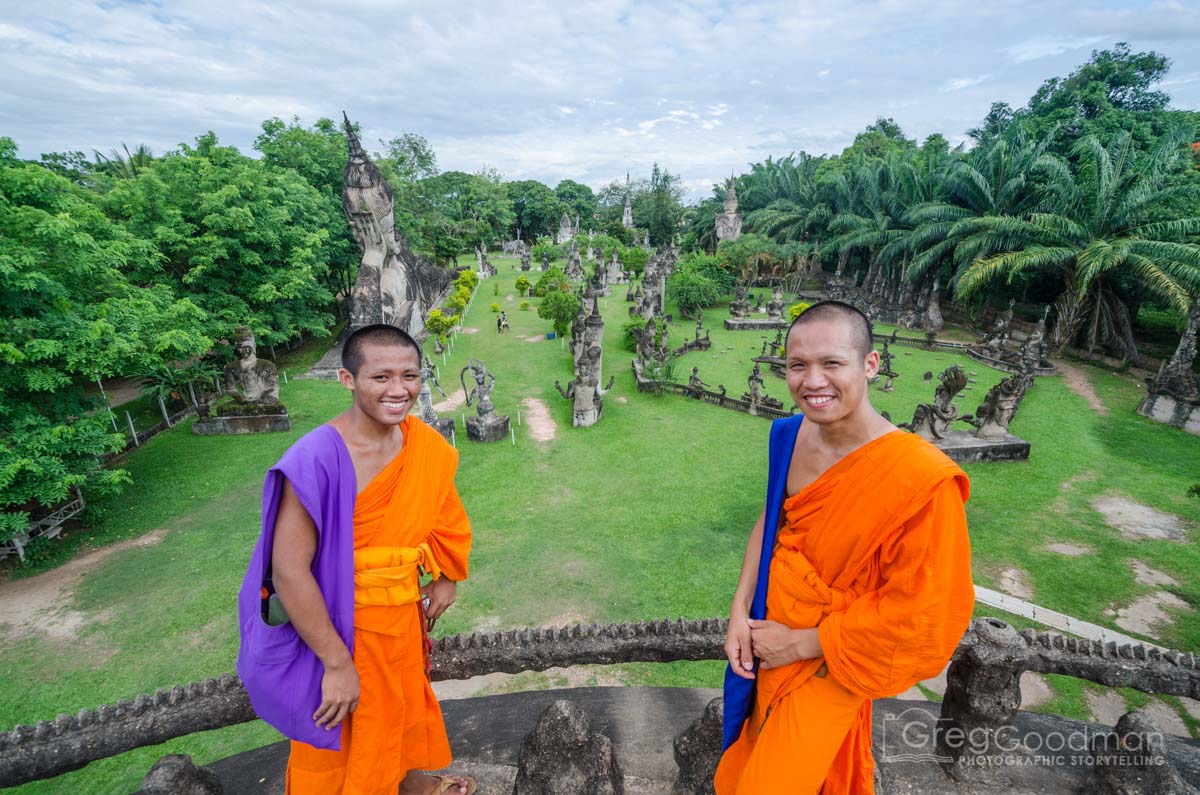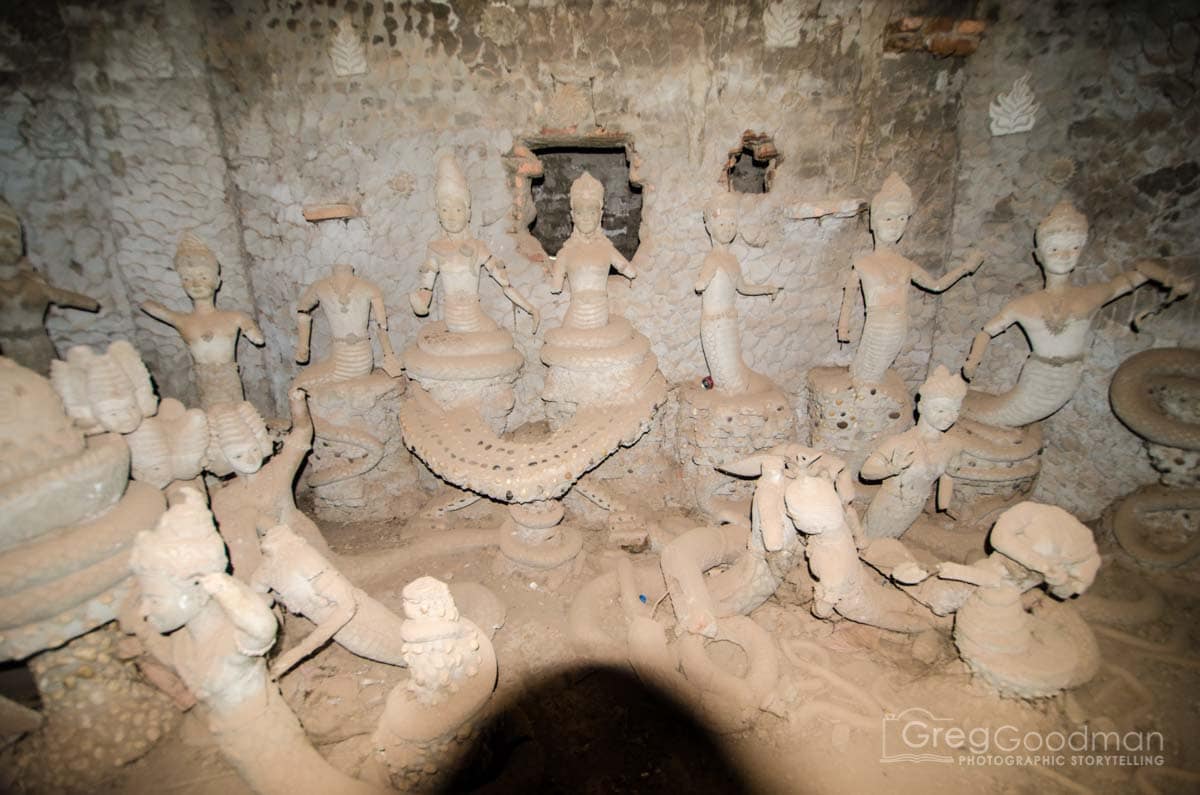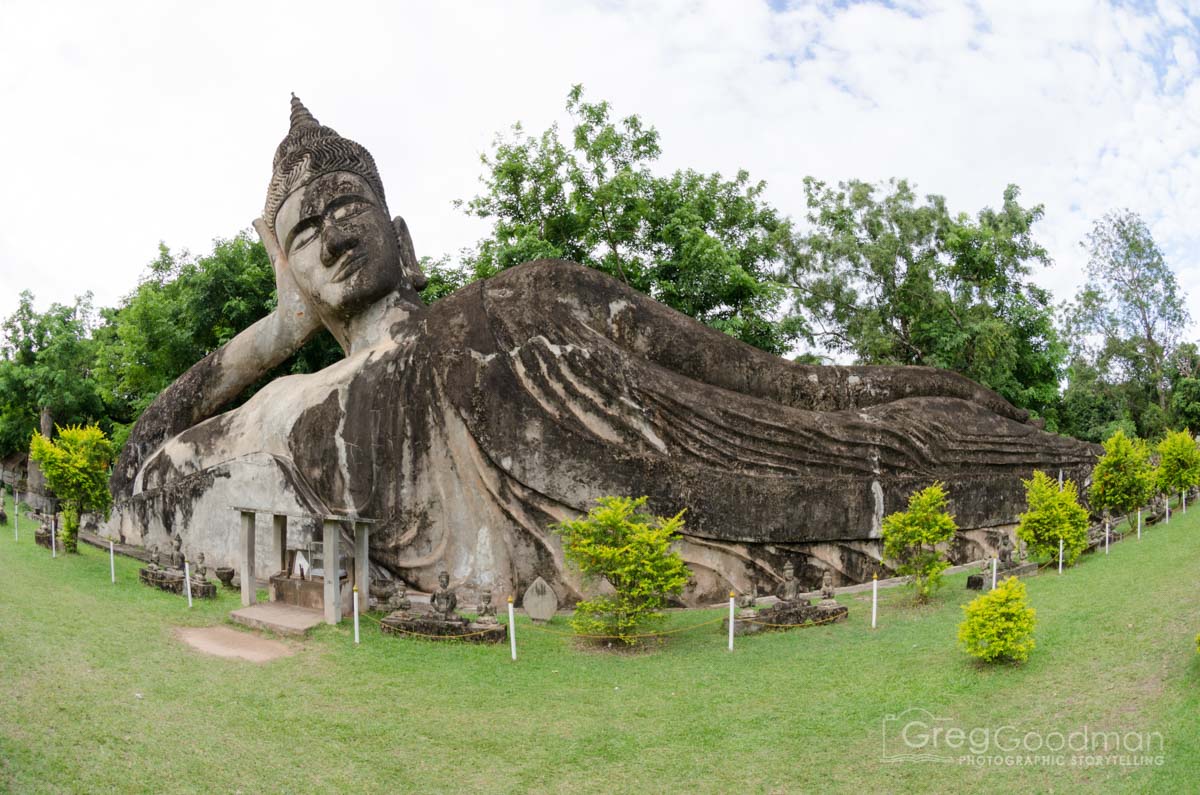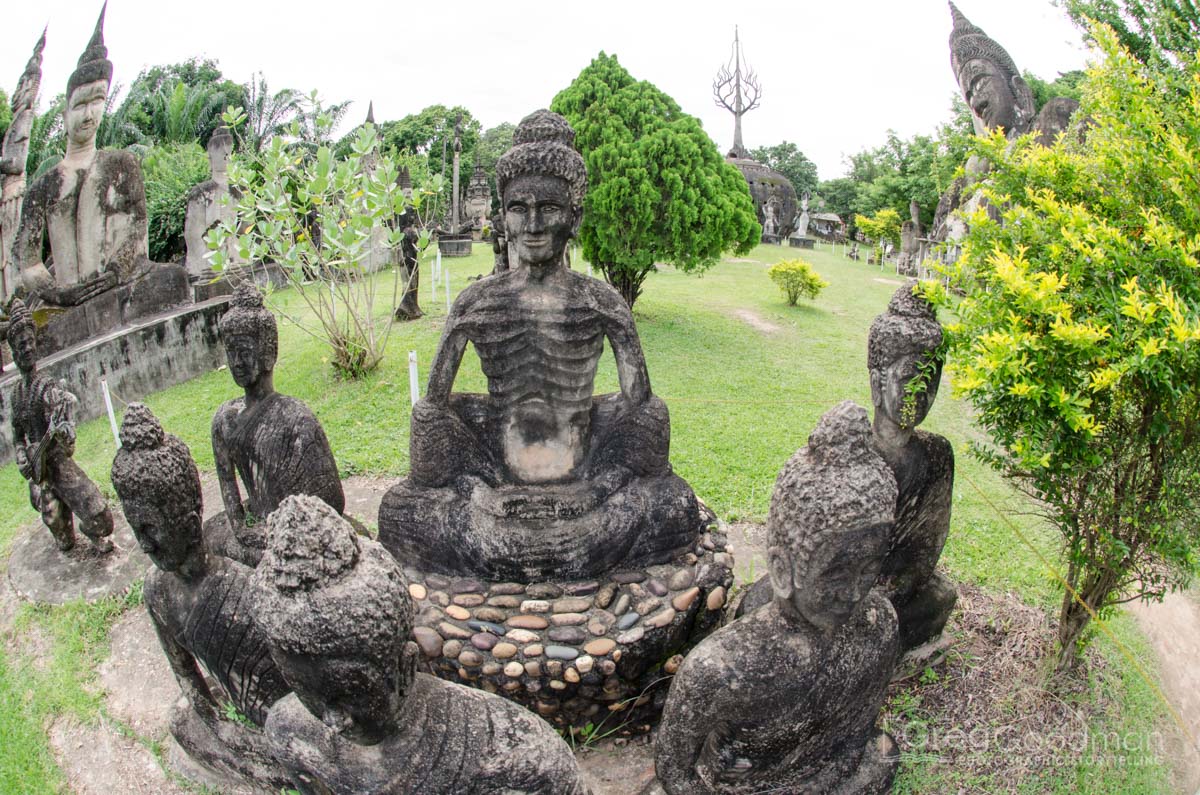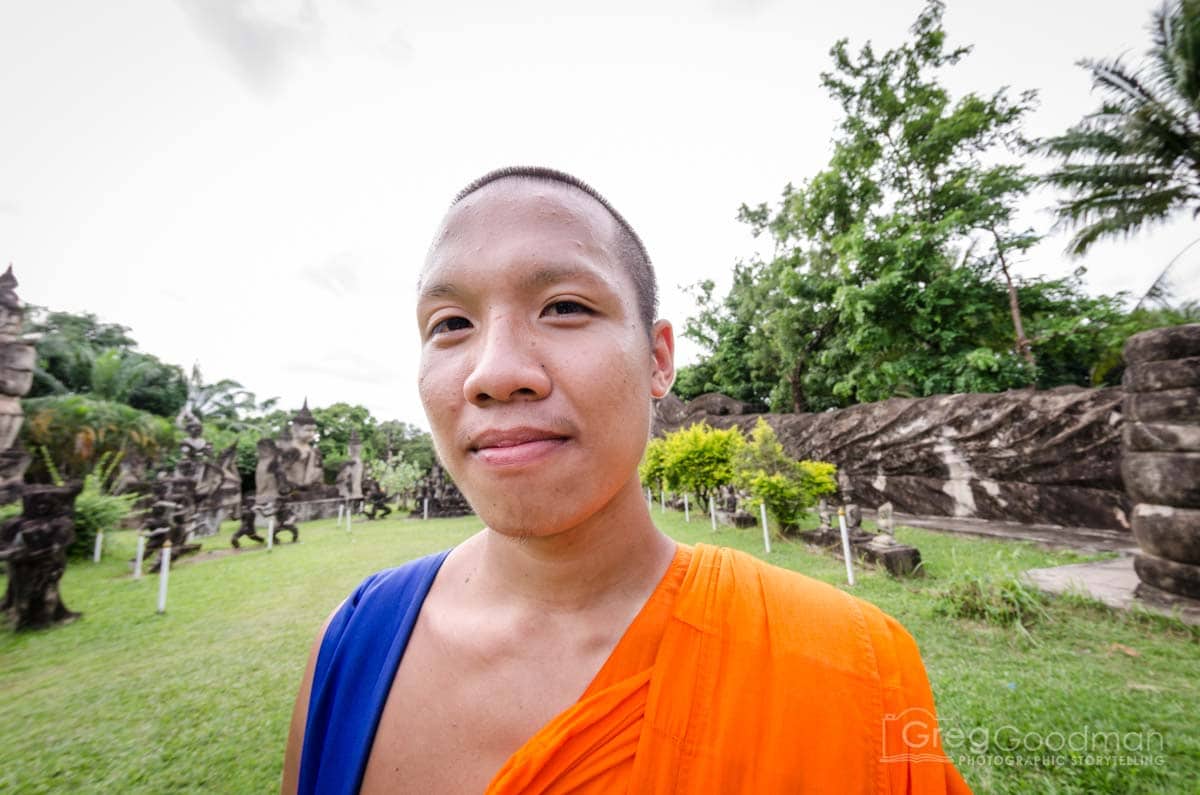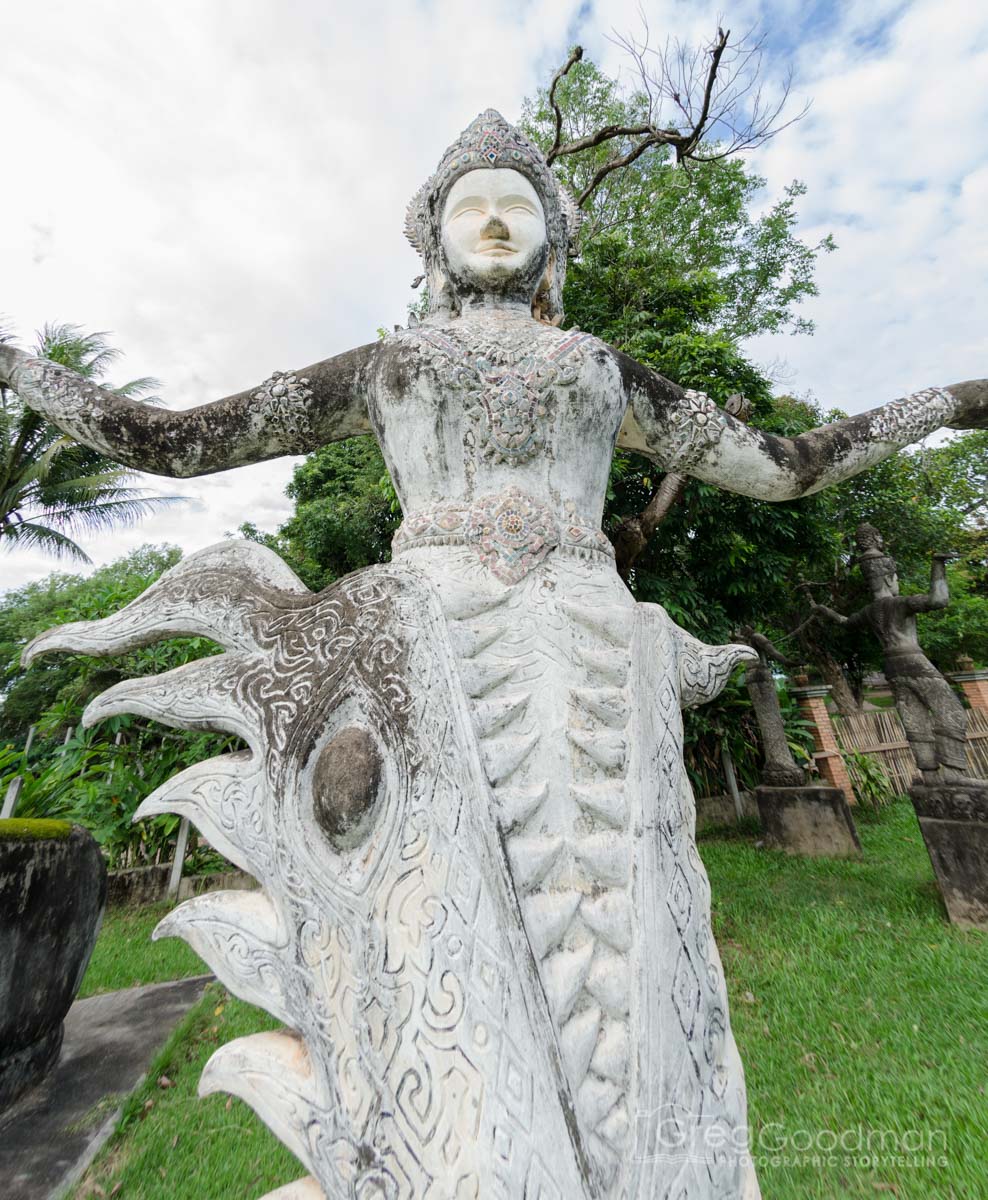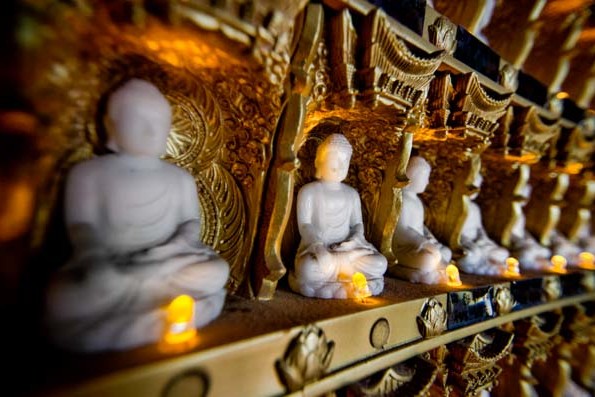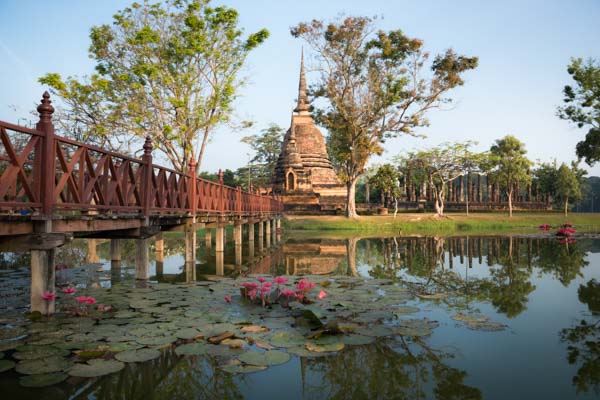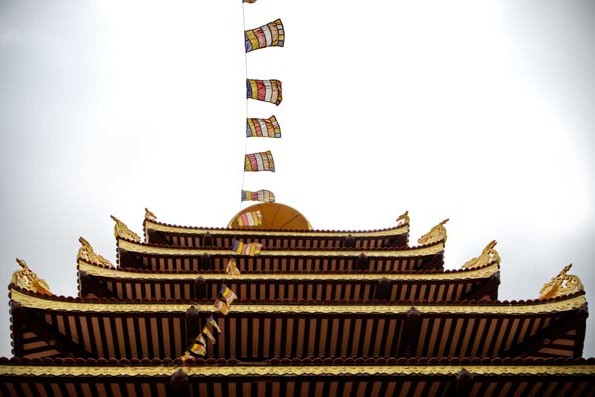Imagine a field of intricately carved demons, snakes, monkeys, gods, tortured souls, heaven, hell, and Buddha.
Weaving through this bizarre landscape is a steady flow of foreign, local, and monk tourists … each with a camera in their hands.
Such is life at Buddha Park in Laos, where abandoned Buddhist and Hindu statues find a new life — and where visitors are left wondering, “what the heck did I just see?!”
What is Buddha Park?
Buddha Park is a sculpture park and tourist attraction located 25 kilometers from Vientiane – the capital of Laos. The easiest way to get there is by flying into Vientiane and hopping into a tuk-tuk. But more on that later.
Buddha Park was founded in 1958 by a priest-shaman named Luang Pu Bunleua Sulilat. Locally known as Xieng Khuan (translated to “Spirit City), Buddha Park is home to more than 200 statues depicting Buddhist and Hindu deities and legends. While they appear to be ancient, most of the relics were constructed on site in the late 1950s and 1960s.
The statues themselves span a wide variety of carving styles, from beautiful and ornate to grotesque, bizarre, crumbling, and dilapidated. I once heard someone describe the park as,
It’s like Tim Burton’s imagination threw up on a little plot of land.
The park’s centerpiece is a massive 390-foot-long reclining Buddha, which sits in the middle the field and has a designated area for prayer. Visitors also flock to the park’s depiction of hell; a three-story structure with a floor for each degree of human sin. — More on that later.
Hi. I’m a Monk Student. Can I Give You a Tour?
Here’s what I wrote in my travel journal after visiting Xiengkuane in 2012.
Moments after arriving at the Xiengkuane Buddha Park in Laos, my wife, Carrie, and I were approached by a pair of friendly young Monks. Novice Somchit was the more talkative of the two, as he began to ask the customary questions.
“Where are you from? How do you like Vientiane? Is this your first time to the Buddha Park? Where else have been in Laos? What is the weather like where you are from?”
Novice La chimed in a few times, but his English was not nearly as good as Somchit’s and clearly seemed self-conscious. He did tell us that the two of them were students at the Dongsavath Temple in Vientiane’s Sesatthanak District
This small talk went on for a few minutes before Somchit asked us if we wanted a tour of the Buddha Park. He liked to practice his English and we were more than happy to learn about the large variety of statues in front of us.
Climbing the 3 Levels of Hell
One of the most iconic structures at the Kiengkuane Buddha Park is a large pumpkin-like structure that represents the three levels of hell. Exploring the building is not for the faint of heart, and can be especially traumatic for anyone suffering from claustrophobia or a fear of the dark.
After entering through a small door (shaped like a demon’s mouth), get ready to scrape your body against a series of narrow and jagged stone steps. Each of the three floors contains an assortment of dimly-lit macabre stone statues showcasing the punishments that sinners receive in hell.
Finally, after successfully navigating the demonic hordes and reaching the “earth realm” (aka, an open-air rooftop), you are treated to a magnificent view of the entire Buddha Park. All that’s left now is to go back down.
All About Buddhist Statues
During our “tour,” Novice Somchit shared countless pearls of wisdom about Buddhism and Buddha Park. While I instantly forgot most of them, I did manage to write down …
» From the top of the “hell structure,” you have a direct view of a towering spire, which represents heaven.
» Buddha is often surrounded by a seven-headed dragon or sea creature, which is a representation of the Naga King is protecting him from the monsoon.
» The Naga King tried to turn himself into a Monk, but Buddha saw through his disguise and said that he could not be a monk because he was the Naga King.
» Each country has a different representation of Buddha.
» Whenever you see temple roof with a tall four-sided column that is wider at the base than the top, it is a representation of Heaven.
» When the Buddha holds his palms outward with his fingers towards the sky, it is his way of stopping the violence around him.
How to get to Buddha Park
Buddha Park is located near Thadeua Village, which is about 25 kilometers South East of Vientiane and sits alongside the shores of the Mekong River.
Flying into Vientiane, Laos
For those flying into Laos, your destination is Vientiane’s main airport – Wattay International Airport (VTE). If you’re coming from Thailand or elsewhere in Southeast Asia, just there are a ton of low-cost airlines that can get you to Vientiane. Air Asia is always one of my favorites.
Tours, Tuk Tuks, and Local Buses
Pretty much every guesthouse, hostel, or hotel can sign you up for a tour. They can also point you in the direction of a tuk-tuk driver, who will be happy to offer a round-trip fare for 150,000 – 200,000 kip (depending on your bargaining skills)¹. The driver will wait for you in the parking lot, so there are no worries about how you’re getting back.
It’s also incredibly easy and cheap to take public transportation. Just head to the Khua Din bus station – located next to the Talat Sao Market – and hop on board Bus 14. It departs several times an hour and the entire ride takes roughly 45 minutes. All this for the low price of 6,000 kip.
Finally, you can always rent a motorbike and drive there yourself. This is by far my favorite way to travel around Vientiane, as you can stop at local markets and restaurants, see a different side of the city, go at your own pace, and bump your way over countless potholes.
Whatever transportation you use to get to Xieng Khuan, make sure to:
- Leave yourself a few hours to soak it all in
- Find a monk and say hi
- Take tons of photos
- Go to hell
- Enjoy your visit!
EXPLORE SOMEWHERE NEW
BUY A PRINT
All photos on this site are available as limited edition fine art photographic prints. Please get in touch for sizes and rates.






